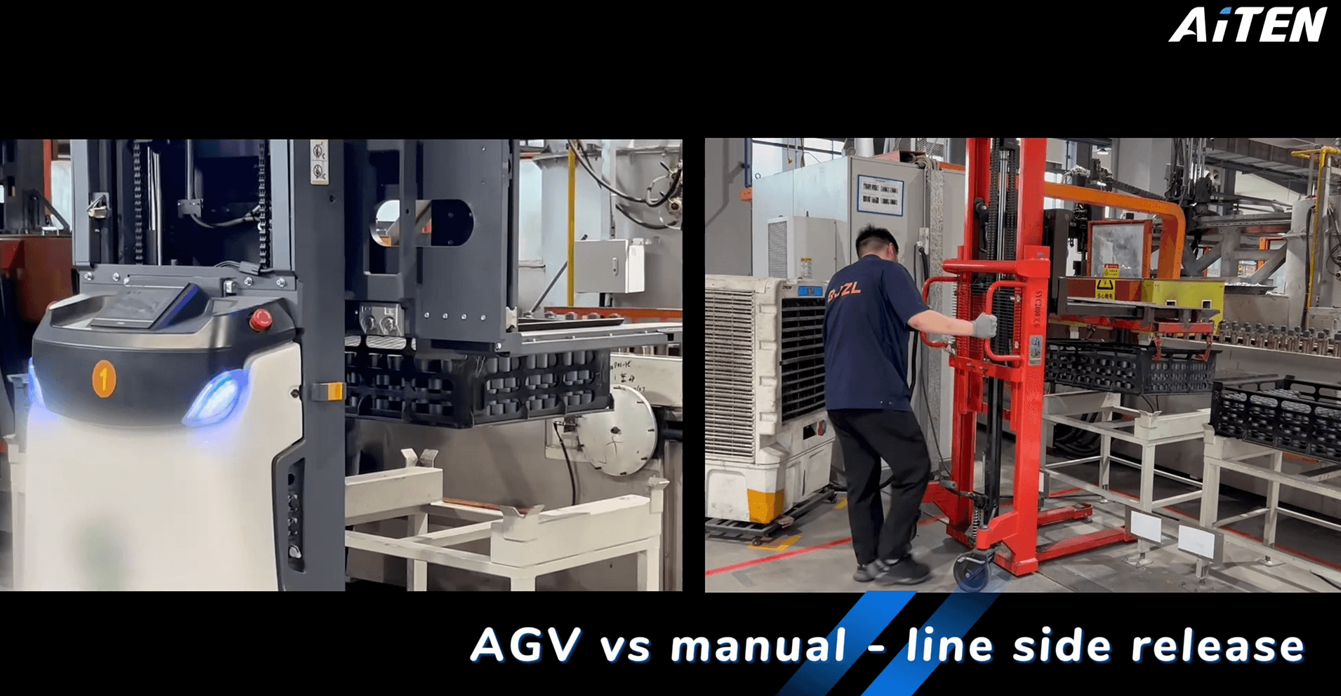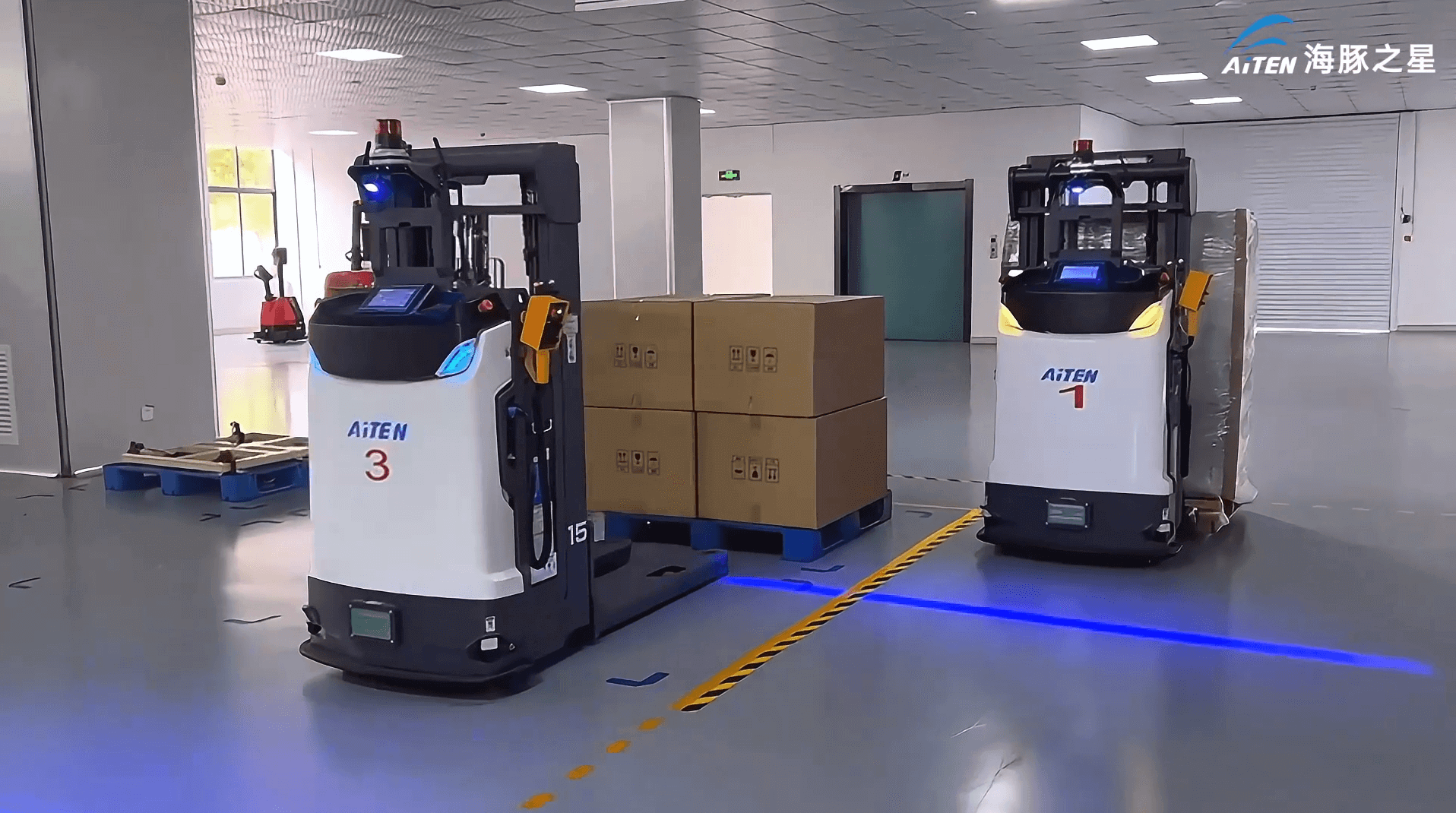How Utilising Robotic Forklifts Can Reduce Your Costs

In the increasingly competitive logistics and manufacturing sectors, persistently high warehouse operational costs have become a core challenge for many enterprises. Rising labour costs, unavoidable human errors, and limited work efficiency are all eroding corporate profits.
Robotic forklifts are emerging as a key tool for businesses seeking to reduce costs and enhance efficiency. By automating material handling operations, enterprises can optimise processes and significantly lower long-term operational expenses.
If you decide to start small, even a modest automation initiative can yield substantial returns.
1. Significantly Lower Labour Costs
Labour shortages and rising wages make traditional forklift operations increasingly expensive. Robotic forklifts can operate 24/7 without breaks, reducing the dependence on manual labour.
Key cost-saving benefits:
- Decrease in long-term labour expenses
- Elimination of overtime costs
- Lower recruitment and training expenses
- No personnel turnover or labour risks

The advent of autonomous forklifts has reduced businesses' reliance on manual labour, significantly alleviating the burden on managers to address staff issues. Following the introduction of this technology, enterprises have not only saved on wage costs but also eliminated the need to manage rostering or deal with employee concerns. These robotic units handle repetitive tasks day in, day out without requiring breaks or benefits, resulting in a substantial reduction in overall operational expenditure. Although the initial investment is substantial, many logistics managers consider this expenditure to be well worth the cost.
2. Reduce Human Error and Accident-Related Costs
Manual forklift operation frequently leads to collisions, cargo damage and safety incidents, incurring both direct losses and hidden costs. Robotic forklifts achieve highly secure autonomous operation through sensors, 3D vision and SLAM navigation. These robotic vehicles significantly mitigate cargo damage caused by human error—such as racking collisions or product falls—directly reducing cargo loss costs.
Such improvements are crucial, as no one wishes to contend with profit-eroding scenarios such as stockouts or overstocking.
Industry data indicates that fully automated warehouses achieve an error reduction of approximately 90% compared to traditional methods. Whilst no system is flawless, this level of precision is vital to the day-to-day operations and ultimate profitability of most companies.
3. Improve Operational Efficiency
The core of cost control lies not merely in “saving money”, but in “enhancing efficiency and increasing revenue”. Through automated process optimisation and intelligent coordination, robotic forklifts elevate operational efficiency to new heights, thereby indirectly reducing logistics costs per unit of goods.
Robotic forklifts operate with precision and stability, following system-planned routes while integrating with WMS and MES systems to enhance overall logistics efficiency.
Efficiency-driven savings:
- Faster completion of handling tasks
- Reduced process bottlenecks
- Increased throughput within the same footprint
- More stable production efficiency
What truly sets automated forklifts apart is their ability to operate continuously day after day. Running 24 hours a day, seven days a week, they significantly enhance productivity in certain warehouses. Some studies indicate that in specific circumstances, productivity gains can reach as high as fifty per cent. For companies handling substantial volumes of goods or facing tight delivery deadlines, this continuous operation model is crucial for meeting high production targets during peak seasons.
For enterprises aspiring to maintain competitiveness in today's market, achieving seamless collaboration between these technologies has become almost imperative, despite many businesses still grappling with initial setup costs and the training required for staff to adapt to new processes.
4. Reduce Maintenance and Equipment Costs
Sudden failures in conventional equipment frequently result in unplanned losses. The intelligent control system of robotic forklifts minimises abrupt acceleration and braking, thereby reducing wear and tear on the forklift's mechanical components.
Cost benefits:
- Lower maintenance expenses
- Longer equipment lifespan
- Reduced need for spare parts
- Optimised fleet utilisation
5. Enable Space Optimisation to Cut Storage Costs
With precise navigation and consistent driving behaviour, robotic forklifts can operate in narrower aisles and tighter warehouse layouts.
This leads to:
- Better space utilisation
- Increased storage density
- Lower warehouse rental or expansion costs
Conclusion
Now that you understand how robotic forklifts can reduce costs, you may be wondering what impact this will have on your workforce. While many within and outside the industry fear that future warehouses will be entirely robot-operated, with human staff completely replaced and left disgruntled, the reality is that businesses making the most of existing automation technologies are more likely to become people-centred workplaces.
Utilising robotic forklifts is not just a technological upgrade—it’s a cost-reduction strategy that improves efficiency, safety, and long-term profitability. By lowering labour expenses, minimising errors, improving efficiency, and optimising space, robotic forklifts provide substantial financial benefits for modern warehouses and factories.
Companies that adopt robotic forklifts today will gain a competitive edge in tomorrow’s intelligent logistics landscape.
Whether you are just embarking on your warehouse automation journey or preparing to expand your fleet of automated forklifts, AiTEN Robotics' material handling specialists are here to assist. Contact us today to initiate your equipment procurement process or learn more about our warehouse solutions.









_%E7%94%BB%E6%9D%BF%201.avif)

